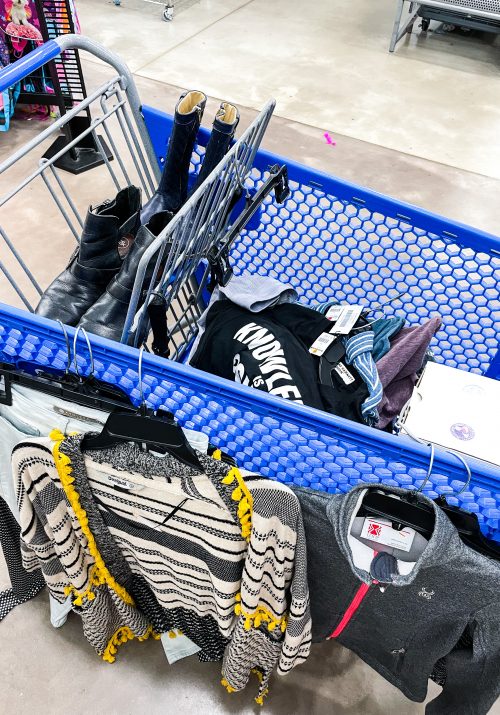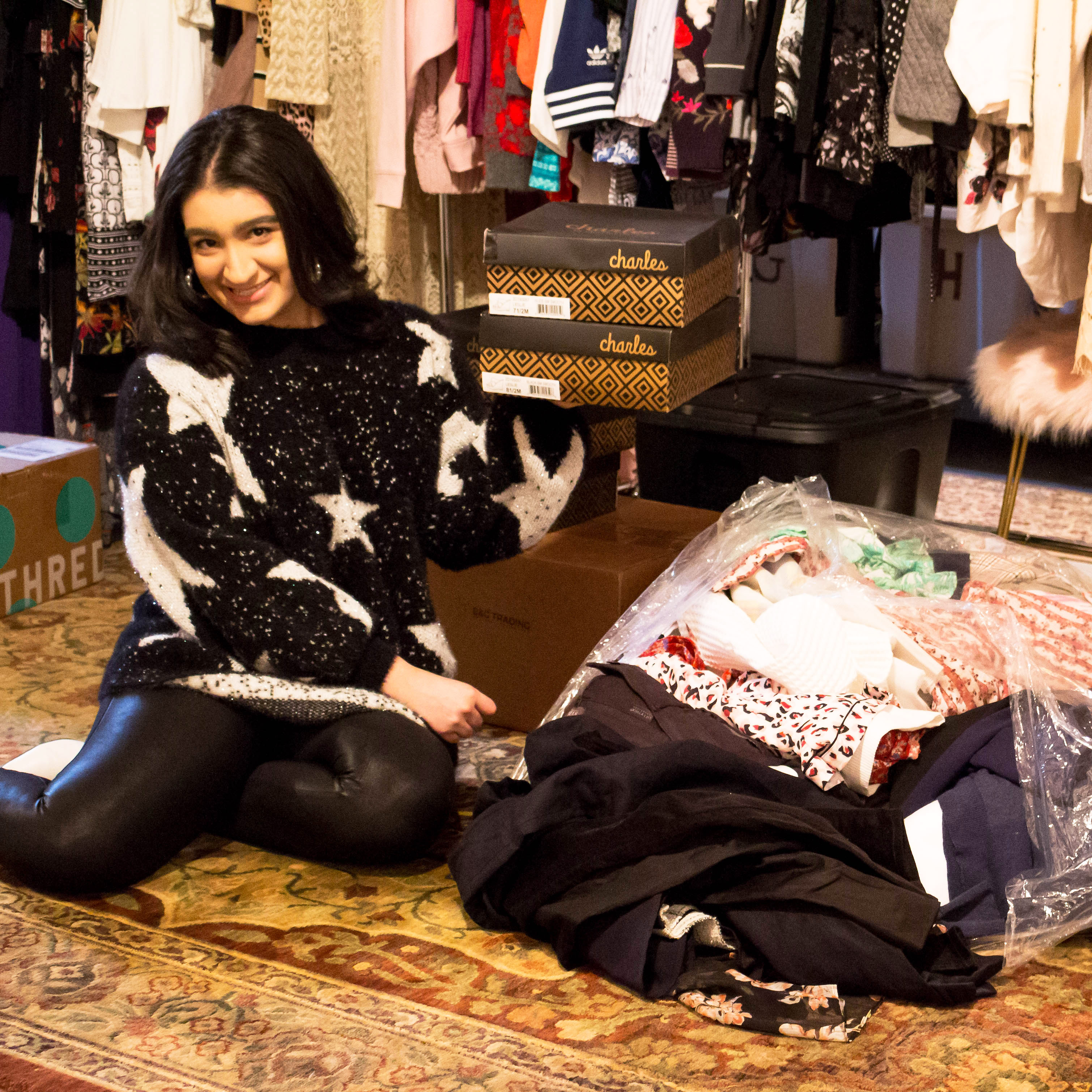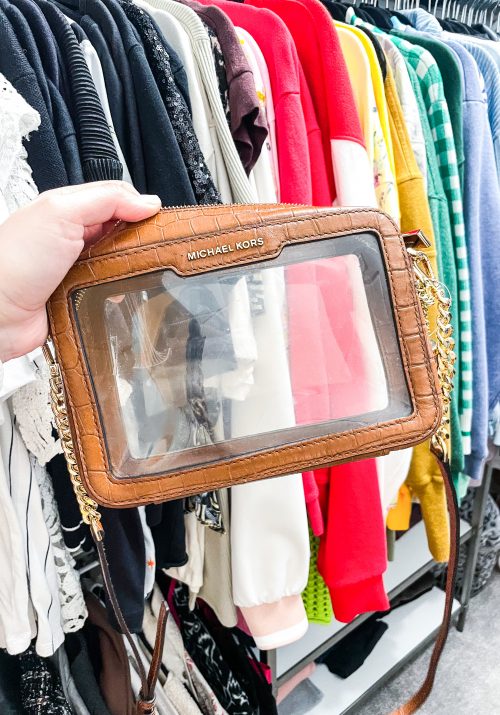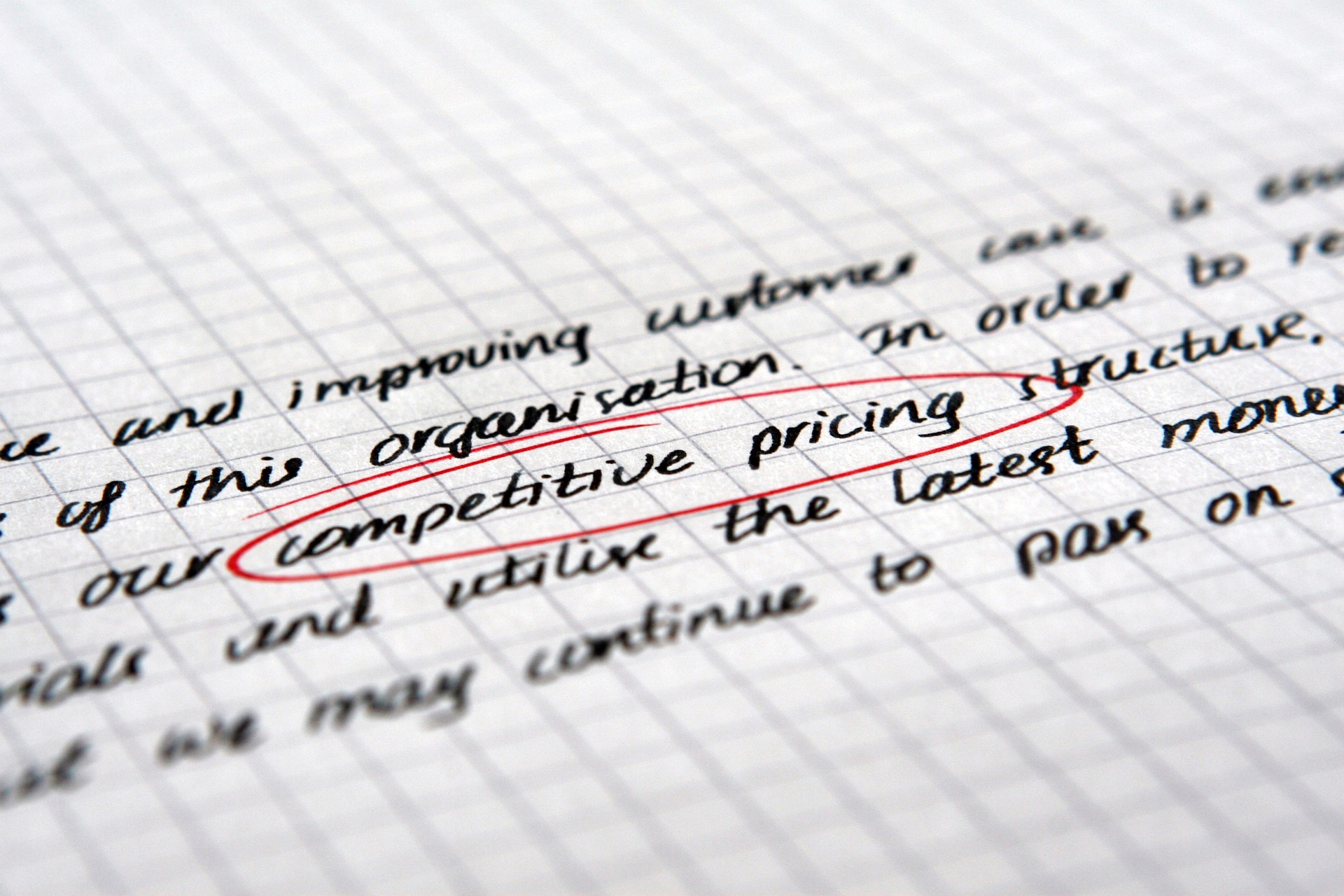
Pricing items on Poshmark can be a little intimidating. This is especially true if you are a newer reseller or don’t have a ton of experience with it. Today, I thought that I would share with you my exact process for pricing items on Poshmark. My goal with this post is to help you to develop an easy and reliable strategy for pricing items within your own Poshmark closet. Let’s get to it!
Before we get into my exact strategy, I would like to discuss a few factors that are going to impact how we price items within the resale market.
What is the “Right” Price?
When selling items in a business, the revenue from selling your products should cover all of your expenses and once deducted, should leave you with a profit. This profit can then be used to expand your business or for personal use.
In order to ensure that you are making a profit, you need to make sure that your items are set at the “right” price. The “right” price should (1) reflect the true market value of the item, (2) allow you to make enough gross profit to maintain a healthy business, and (3) be competitive in the market.
When trying to figure out how to set the “right” price, there are few things to consider:
1) Your Customer– In the world of reselling, it is very helpful to know who your customer is. Not every reseller’s customer segment is the same and that is perfectly okay. The key here is to know who YOUR customer base is and make sure that you are pricing your items accordingly.
2) Your Costs- Before pricing your items, it is important to know what your costs are. These costs include your cost of goods, shipping supplies, paid services, gas, and any other expenses that your business has. It is important to know these costs so that your items can be priced accordingly. (If you are looking for some free apps to help you to track your costs, visit THIS post). Ideally, you would want your item’s prices to cover all of these expenses and still leave you with a profit afterwards.
3) Your Competition and the Market– Reselling is a competitive market in the sense that you are competing with others who are selling the same exact products as you are. As a reseller, you need to constantly monitor the market and see where it is headed. Pricing is going to fluctuate depending on what the market looks like so be prepared to adjust pricing when necessary.
My Strategy for Pricing Items on Poshmark
To make this a little easier to explain, I thought that the best way to go about this would be through a real-life example. Let’s take a look at one of my recent finds:
My Find: NWT (New With Tag) GANNI Leopard Pleated Georgette Midi Skirt
My Cost: $49
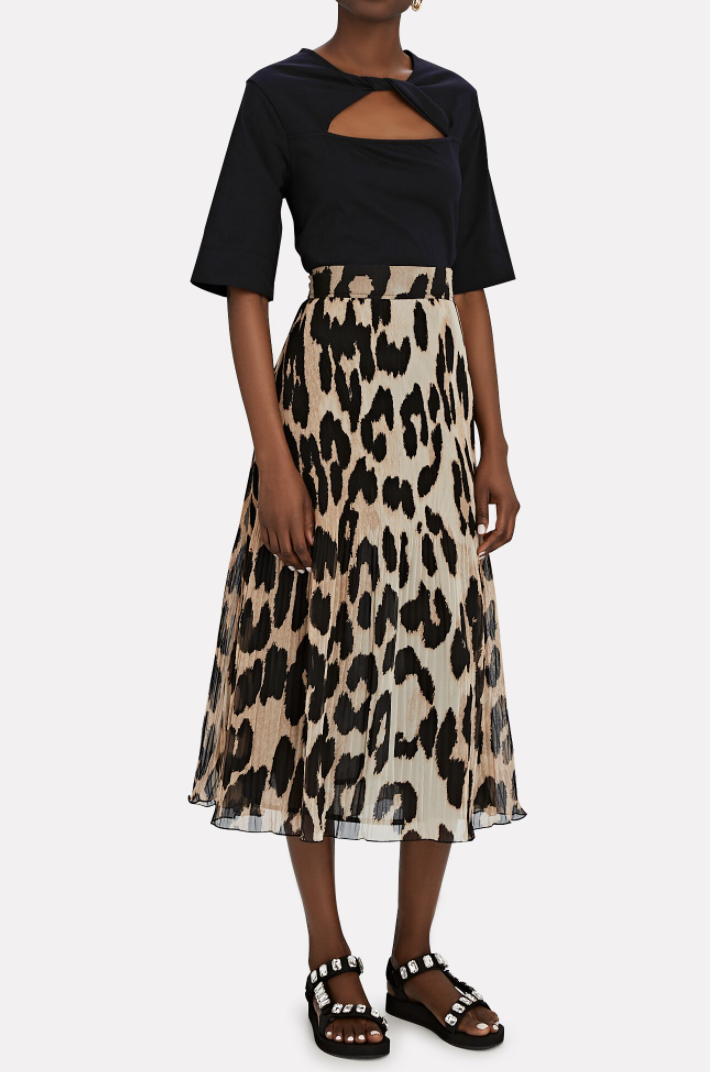
1) Try to Find the Original Retail Price (or an Approximation)
If you have the name of the item, then all you have to do is search the item in Google and see what appears.
If you don’t have the name of the item, do a quick search using Google Lens and then search it on Google. (If you need help using Google Lens, visit THIS post).
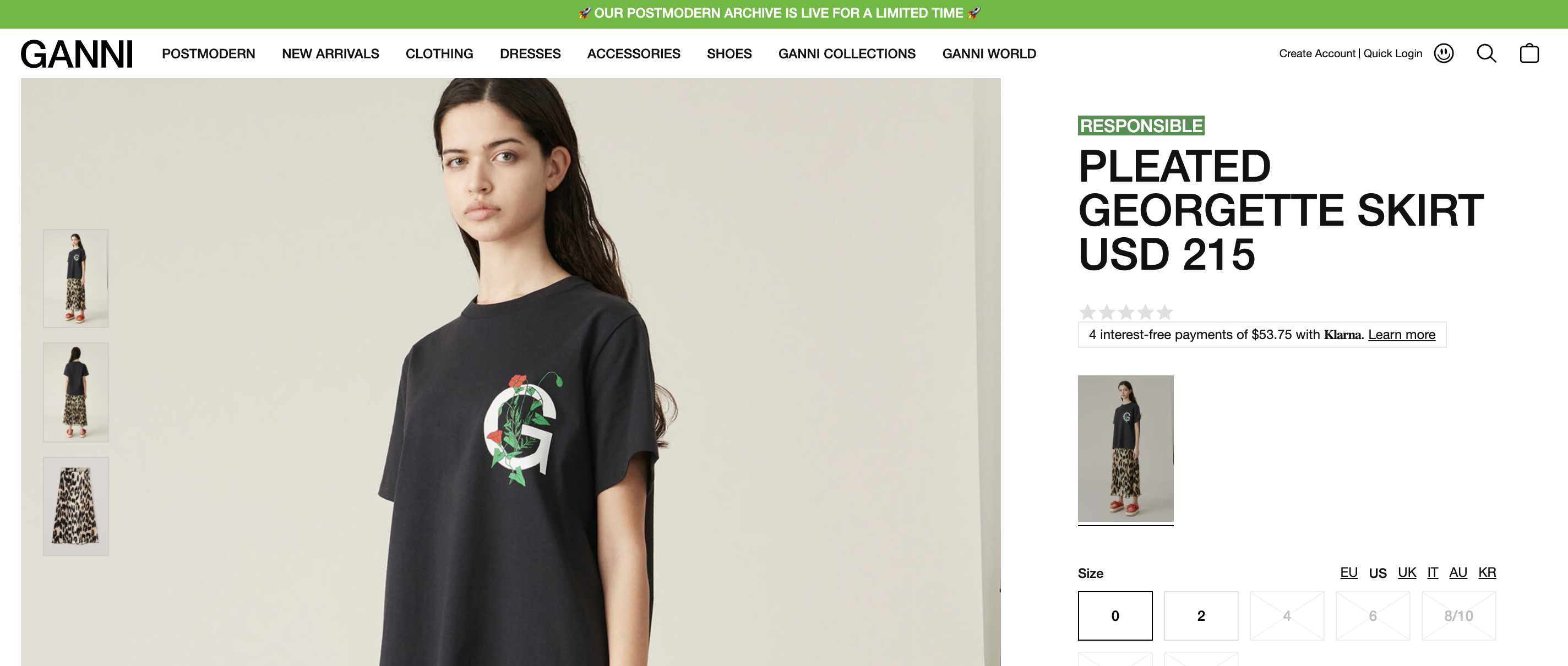
When I search for the item on Google, I am able to locate the original retail price from the GANNI website.
Retail Price: $215
2) Is the Item Still Available for Sale at Retailers?
This is good to know as it will give you a good idea of how recent the item is and what the demand for the item is. For this item, you can see that the item is selling out in various sizes at full retail price. This tells me that the item is in high demand and that sizes are selling out quickly.
A few other things to pay attention to are:
~ Is the Item on Clearance?– This tells you that the item did not sell out at the full retail price and therefore, may not be a popular item. It also tells you that someone may be able to buy the exact same item that you are selling somewhere else for less. Personally, I would consider waiting to list an item until it sells out online. Otherwise, people may spam you with messages stating that they can buy it retail for cheaper.
~What Is the Item’s Current Availability?– If you are looking at the retail site and the item is still available, look to see if sizes are selling out or if every size in stock. If sizes are selling out quickly, then you can assume that the item is probably popular and will sell out quickly. As a result, you may be able to sell your items for more money than you may have originally anticipated. If the item is still in stock in multiple sizes, take a look and see why that is. You can read reviews or try finding the item on other retail sites to see if maybe the item isn’t as popular as the retailer expected it to be.
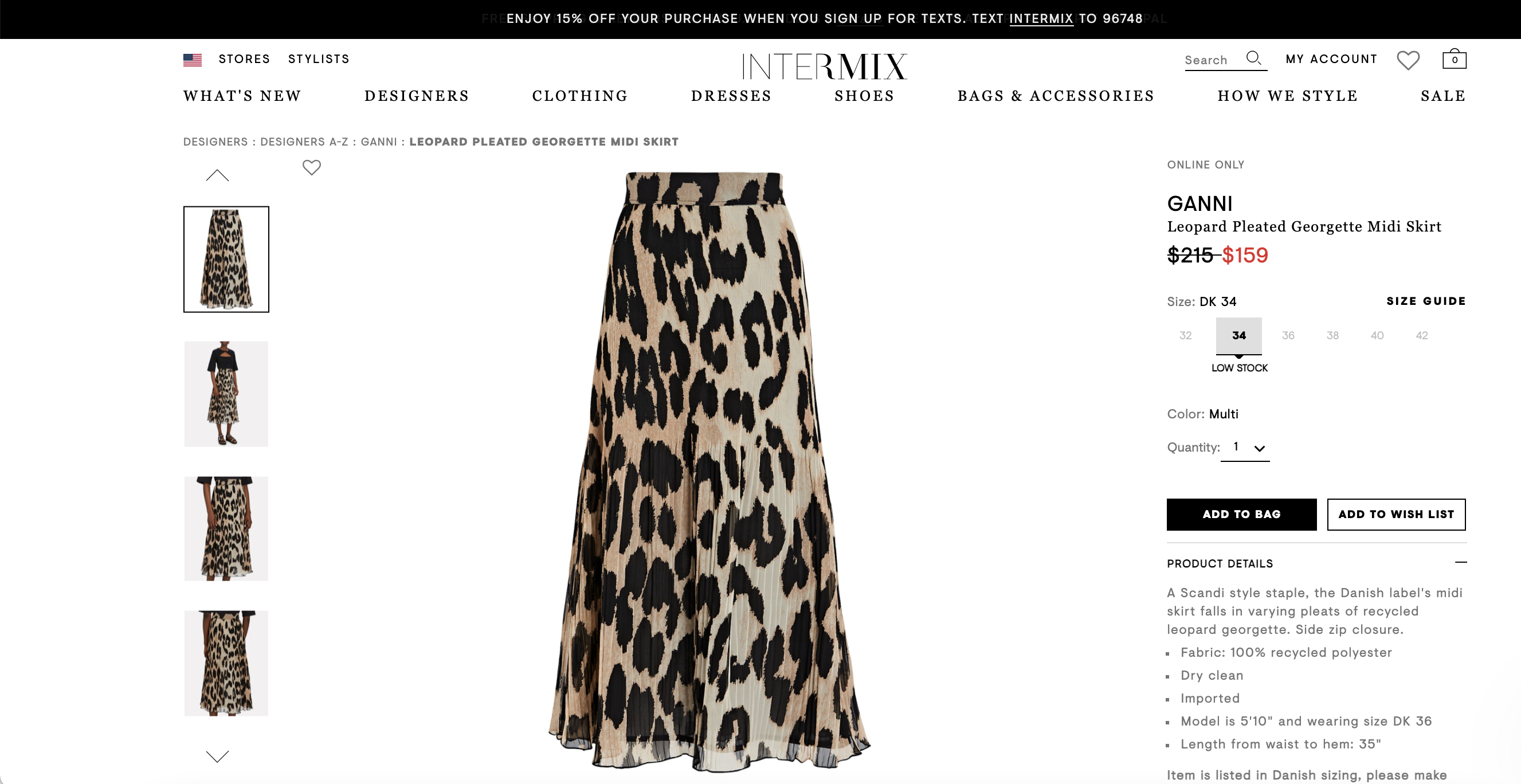
Let’s take a look at the exact same skirt on another retail site, Intermix. On this site, the exact same item is currently on sale for $159 and has only one size remaining. What does this tell me? After comparing the two sites, I am confident that the item is popular as it is selling out of sizes on both sites. However, I am wondering if perhaps the smaller sizes are not performing as well as the larger sizes as they seem to be the only sizes remaining on both platforms.
The skirt that I purchased was in a smaller size and based on this information, I am anticipating that the skirt may take a little longer to sell or may sell for a lower price as the size was not super popular in the retail space. That may not actually be the case but it is a pretty safe assumption.
3) Is the Item Currently for Sale on Other Reselling Apps?
To make this process as easy as possible, I am going to hop onto the SellHound app to compare listings across reselling platforms. The SellHound app is a free app on your phone that you can use to compare items across platforms and is something that I would highly recommend downloading.
When I use the SellHound app, this is what appears when I search for my exact item:

I was able to locate 1 exact item and 1 similar item across Poshmark and Mercari. The item on Mercari is an exact match while the item on Poshmark is the same style but a slightly different print. Let’s compare these listings:
The Poshmark Listing– The item is NWT (new with tags) in a size EU 32 with a list price of $170 and 16 likes.
The Mercari Listing- This item is also NWT (new with tags) in a size medium with a list price of $175 + free shipping and 3 likes.
4) What Has The Item Sold for in the Past?
Now that we know what the current market for this skirt is, let’s take a look at what the same or similar items have sold for in the past. Using the SellHound app, switch the setting on the top to “SOLD” and you can see what previous items have sold for.

Based on these results, it doesn’t appear as though this item has sold on Mercari. However, it does look as though the same or a similar item has sold on Poshmark.
Notice anything interesting about these results?
The first thing that I noticed is that the item has sold for variable amounts. Why is that? You can dive a little deeper into these sold listings yourself but my best guess is that people simply undervalued their items. When comparing these prices with the current market price (between $170 and $175), it is clear to me that previous sellers unvalued their items. I am confident in saying that because when you compare these sold prices to the consumer’s demand to pay the original $215 price tag, it just doesn’t add up. If people are willing to pay $215 for the original item, then why wouldn’t they be willing to pay the same price in the resale market? When you look at current listings priced between $170- $175 that are receiving 16 likes on Poshmark, it is evident that the demand is there.
5) What Is My Ideal Profit Margin?
Now that we have figured out the original retail price and have determined the market value of the item, we next need to figure out how to price it for in order to make a profit. We need to ask ourselves, ‘How much money do I need to make on the item to cover my cost of goods, pay all of my additional business expenses, and still walk away with money at the end?’
The easiest way to do this is to know how much your expenses are ahead of time and also know how much your item’s cost of goods is.
For this GANNI skirt, let’s say that my cost of goods was $49 and my business expenses (shipping supplies, reselling programs, etc.) cost me $3 per item. In order for me to break even and have all of my costs covered, I would need to make $52 on my item after subtracting out all of the reselling fees. On Poshmark, in order to make $52 on my item, I would need it to sell for $66. However, if my item were to sell at this price point, I would be making $0 in profit which is not ideal.
Since I paid $49 for this item (which is a higher cost of goods), I ultimately want to make sure that I can, at the minimum, double my investment. In this case, let’s assume that I would like to double my investment.
So how do I do that?
6) Create Your Pricing Strategy
This is the step where we put everything together and create our price for the GANNI skirt on Poshmark.
This is the information that we have gathered so far:
~Cost of Goods- $49~
~Retail Price- $215~
~Current Listings- $170- $175~
~Sold Listings- $50- $100~
~Consumer Demand- High~
~Online Availability (Both Retail and Resale)- Low~
~Breakeven Price- $52~
~Poshmark Price to Breakeven- $66~
~Looking to Double Investment~
First and foremost, I want to figure out exactly how much I need to make in order to double my investment. If I paid $49 for the item, then I need to figure out how much I need to sell the item for in order to make a $49 profit after deducting all of my expenses. Using the information from above, I can determine that I would need to make $101 after deducting Poshmark fees in order to cover my $52 of expenses and make me a profit of $49. To do that, I would need to have my item sell for $127 on Poshmark. (You can use the tool within the Poshmark listing itself to help you figure this out!)
Now that we have that number, there are a few other factors that I need to consider when pricing the item:
My Price Drop Strategy- This is a strategy that I use with every item that I sell on Poshmark. In order to maximize a listing’s exposure, I will drop the price by 10%. (To learn more about my strategy, visit THIS post.)
Offers- As much as I would love to be optimistic and hope to receive a full price offer on this skirt, that just isn’t realistic. More than likely, I am going to receive lower offers on this skirt and I need to structure that into my price.
Your Time– Your time is valuable and is something that should be taken into consideration when pricing items. Determine what your time is worth and make sure that it is factored into your item’s final price.
7) The Final Price
Here is how I am going to price the item:
~ I am going to list the item on Poshmark for $200
~ After the item is listed, I am immediately going to lower the price down to $180 (10% lower and also within the market value).
~ My target price will be around $150 (to account for offers)
~ After Poshmark fees, I should make $120 which will cover all of my expenses, double my investment, and pay me for my valuable time.
I hope that you found this post helpful and I would love to hear what you think of this method!
If you don’t already, be sure to check out my Instagram for more Reselling Tips at @ RecycledRosesGuide (Click HERE) and my Facebook page HERE.
You can instantly shop all of my looks by following me on the LIKEtoKNOW.it shopping app HERE.
To get email notifications for my next blog post and to receive my monthly Reseller Recap (with freebies), sign up for my emails below:
Baci,

